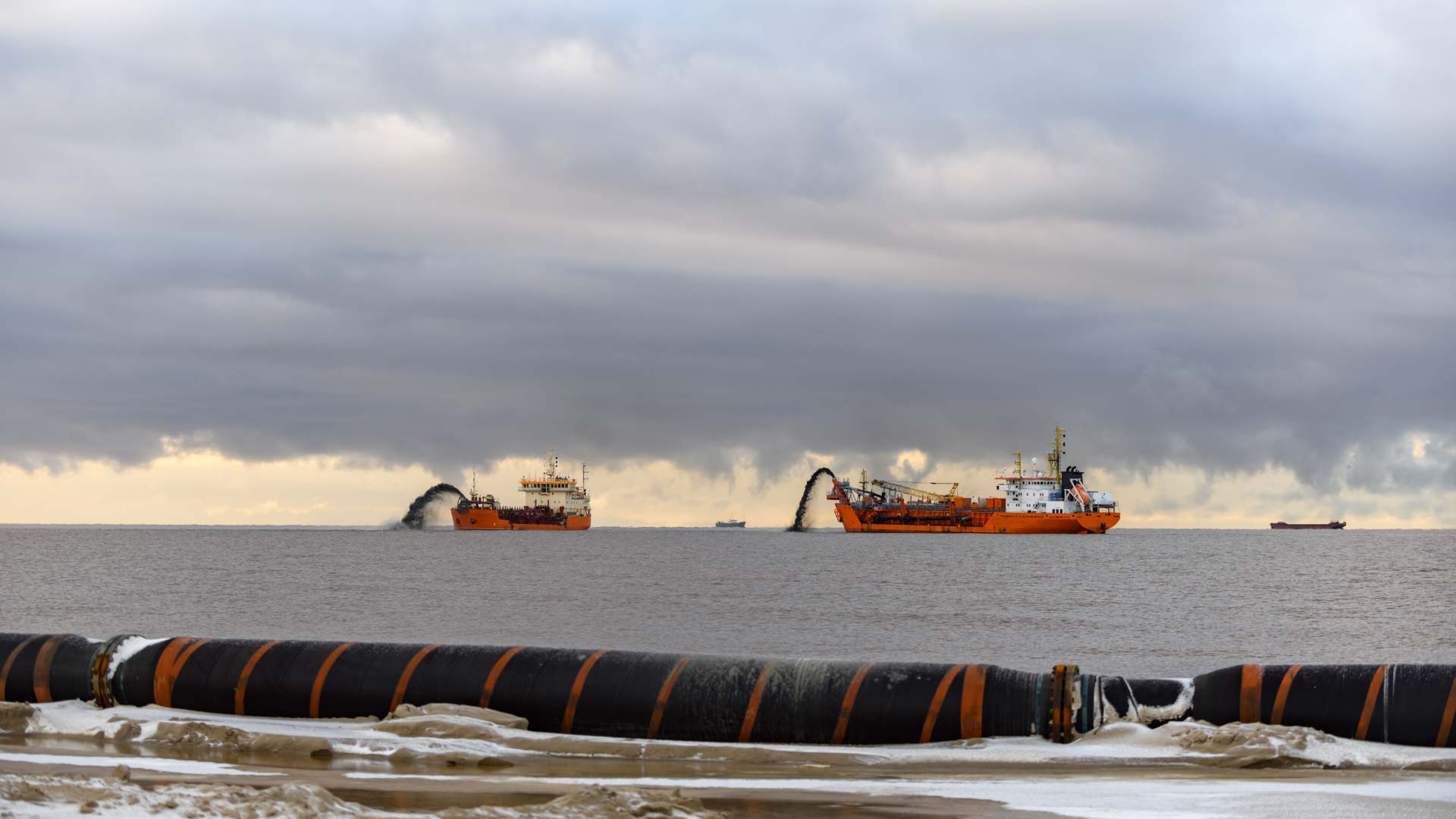Introduction
Sedimentation is a pressing challenge for waterways worldwide. When sediment builds up in rivers, reservoirs, and streams, it disrupts aquatic ecosystems, reduces water flow, and compromises critical infrastructure. Without proactive measures, sedimentation can lead to increased flood risks, reduced water quality, and long-term environmental degradation.
Sustainable water management practices are essential to combat these challenges. Two pivotal strategies in this effort are strategic dredging and infrastructure rehabilitation, which together restore waterways, enhance ecosystem health, and support community resilience. Projects like the Roaring Brook dredging initiative and the rehabilitation of the No. 7 Reservoir Dam in Pennsylvania showcase the tangible benefits of these approaches.
Understanding Sedimentation and Its Impact on Waterways
What is Sedimentation?
Sedimentation refers to the process where soil, sand, and other particulates settle at the bottom of a water body. These materials often enter waterways due to natural erosion, stormwater runoff, or human activities such as construction and agriculture.
Impact of Sedimentation on Ecosystems and Infrastructure
The accumulation of sediment in waterways has far-reaching consequences:
- Ecosystem Disruption: Excess sediment smothers aquatic habitats, affecting fish and plant life that rely on clear water for survival.
- Reduced Water Flow: Sediment buildup narrows stream channels and reservoirs, restricting water movement and reducing capacity.
- Increased Flood Risks: Blocked water channels lead to overflow during heavy rains, exacerbating flooding in surrounding areas.
- Infrastructure Strain: Sedimentation accelerates wear on dams, bridges, and water management systems, increasing the need for costly repairs.
The Role of Strategic Dredging in Waterway Maintenance
What is Dredging?
Dredging involves removing accumulated sediment from the bottom of water bodies. Techniques such as mechanical dredging, hydraulic dredging, and suction dredging are employed depending on the project’s scope and goals.
Key Objectives of Dredging Projects
- Restoring Water Flow: Removing sediment clears channels, ensuring unimpeded water movement.
- Improving Water Quality: Dredging helps reduce pollution levels, restoring the natural balance of ecosystems.
Infrastructure Rehabilitation: Strengthening Water Management Systems
The Importance of Dam Rehabilitation
Dams play a crucial role in storing water, controlling floods, and supporting regional water systems. However, aging structures pose significant safety and operational risks. Regular rehabilitation ensures that dams meet modern safety standards and continue to function effectively.
Key Features of the No. 7 Reservoir Dam Rehabilitation
The 152-year-old No. 7 Reservoir Dam in Pennsylvania is undergoing a $17 million rehabilitation to address structural concerns. This project involves:
- Enhancing structural stability to withstand modern stressors.
- Aligning with updated Pennsylvania Department of Environmental Protection (DEP) safety standards.
- Ensuring long-term water management reliability for the region.
Broader Benefits of Infrastructure Upgrades
- Water Reliability: Improved infrastructure ensures consistent water supply for communities.
- Community Safety: Reinforced dams and waterways reduce flood risks.
- Sustainability: Rehabilitation projects contribute to sustainable water management by maintaining ecosystem balance.
Ensuring Compliance with Environmental Standards
Collaborating with Regulatory Authorities
Compliance with environmental regulations is critical for sedimentation management. Partnerships with agencies like the DEP ensure that projects adhere to strict safety and environmental guidelines.
Ongoing Monitoring and Accountability
The Roaring Brook project underscores the importance of long-term monitoring. Pennsylvania American Water has implemented biannual sediment level checks, especially during the No. 7 Reservoir Dam rehabilitation, to ensure continued success in sediment control.
Environmental and Community Benefits of Sedimentation Management
Protecting Local Ecosystems
Strategic sediment removal preserves aquatic habitats, reducing pollution and creating a healthier environment for fish, plants, and wildlife.
Enhancing Water Quality and Availability
Restored waterways provide cleaner, more abundant water for residential, agricultural, and industrial use.
Strengthening Community Resilience
Proactive sediment management reduces the risk of floods and infrastructure failures, safeguarding communities and local economies.
Challenges and Solutions in Sedimentation Management
Common Challenges
- High Costs: Dredging and rehabilitation projects require substantial financial investment.
- Balancing Ecology and Development: Protecting ecosystems while executing large-scale projects can be complex.
Innovative Solutions
- Advanced Technologies: Modern dredging equipment minimizes environmental disruption while maximizing efficiency.
- Sustainable Practices: Repurposing dredged material for land reclamation or construction reduces waste and environmental impact.
Looking Ahead: Building a Sustainable Future
The Ongoing Role of Strategic Projects
Projects like Roaring Brook and the No. 7 Reservoir Dam set a benchmark for integrating environmental stewardship with infrastructure improvements. Their success highlights the importance of long-term planning and investment in water management systems.
Future Opportunities in Water Management
- Expanding Monitoring Initiatives: Broader sediment monitoring ensures early detection of issues and proactive intervention.
- Increased Investment: Public and private funding can drive more comprehensive water management projects, benefiting both communities and ecosystems.
Conclusion
Addressing sedimentation through strategic dredging and infrastructure rehabilitation is vital for protecting waterways, preserving ecosystems, and ensuring sustainable water management. Projects like Roaring Brook and the No. 7 Reservoir Dam rehabilitation demonstrate the transformative impact of these efforts.
By prioritizing collaboration with regulatory authorities, employing innovative solutions, and maintaining a commitment to sustainability, communities can build a resilient future. Stakeholders and the public alike must support these initiatives to safeguard water resources for generations to come.
Let’s work together to ensure our waterways remain vibrant, healthy, and capable of meeting the challenges of the future. For more updates on water management initiatives, visit Pennsylvania American Water’s website.
